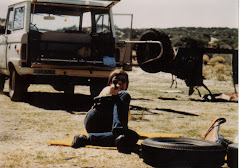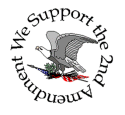Corruption in the Traffic Department
At every signalized intersection in Los Angeles, Orange County and San Diego (and in probably just about every city of over 50,000 population in the country) are these saw-cut circles in the pavement, in which are cemented wire loops that are traffic sensors. They sense the mass of metal that is a car or truck, though some of them miss smaller motorcycles.
Originally, they were installed to allow the signals to remain green on major boulevards during periods (e.g. at night) when there was little or no traffic on the minor intersecting streets. If a car comes up to the sensor loop on the minor street, it will trip the sensor and shortly give him a green light.
Recent years, they've installed even more of these sensors in between these intersections at strategic locations. The plan is to tie the city's sensor system to computers, which can be programmed to regulate signals on the entire street grid to move traffic efficiently during various trafic conditions.
Those of us who travel the streets in motor vehicles daily wonder what happened.
Every intersection is another red light at which we have to stop and burn expensive gasoline for up to two minutes until the signal turns green. Then you move a block or two to the next red light.....and repeat.
Why, when driving along Beach Boulevard or Figueroa or El Cajon Boulevard, or any of hundreds of other arterial streets in Southern California or elsewhere, can't the signals be regulated for smooth traffic flow?
Well, friends, I've found out the reason.
Relying on traffic data from all those pavement sensors, any reasonably intelligent computer wiz with a knowledge of the city and with these data could develop programming that would regulate the signals to maximize traffic movement under the conditions of the day and of the time of the day. It'd be complicated in some areas, but generally traffic goes to business districts and industrial areas in weekday mornings, and away from them in the afternoons. Not quite as simple as that, but you get the idea.
When your light turns green, and the next one turns yellow as you approach it--and that happens signal after signal you know it ain't random, folks.
It's corruption in the various city traffic departments. Civil servants in these departments have solicited and received large payments from corrupt executives in oil companies to keep literally every car stopped at idle at as many signals as possible, for as much time as possible to counter the effects of the higher fuel efficiency of modern, smaller cars.
Well, of course I'm being facetious. I don't really think civil servants are in a collusive relationsip with the oil companies--oil companies are already colluding with the feds!
The real reason is that, to a civil servant, the incentive is to do nothing at all, or at best do the barest minimum that will keep him paid and employed until he can achieve the fine retirement pension we all are forced to give him. Doing nothing at all is best because if he does nothing, he will do nothing that he can get in trouble for.
The reason the traffic grid is so screwed up is this simple fact: No civil servant will get paid a dime more if he fixes the problem, so why bother?
Perhaps we have to look at it in a different way. In whose interest is it that traffic flow efficiently? Of course, it's in the interest of all of us, so why don't those who we (supposedly) pay to take care of this do such a horrible job?
We re-elect our politicians over and over whether they do their job or not--none of them do. They have agendas that run counter to ours--they'd rather we be shipped to and from approved places by cattle car. Private autos let us do what we want. The politicians, deep down, don't want that.
No help there.
Something different has to be done. I'm working on it. You should be, too.
Warm regards,
Col. Hogan
Stalag California
Subscribe to:
Post Comments (Atom)






No comments:
Post a Comment